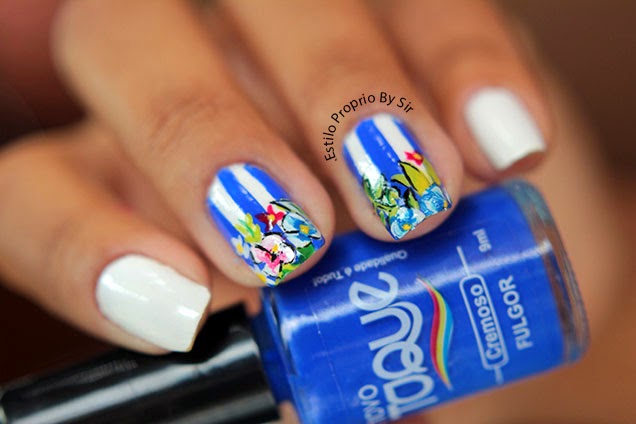6 Hairstyling Termos que você deve saber
Have you ever thought that might be your new hairstylist is faking to you by just using some fancy hair styling terms? Does your hairstyling tell you about the latest hairstyle, but you are not able to understand what he wants to say, simply because you are not aware of the common hairstyling terms! Even not able to understand the language completely can result in terrible haircuts and even disturbed communication with the stylist.
Você já pensou que seu novo cabeleireiro pode usar alguns termos de estilo de cabelo? O seu hairstyling conta você sobre o último penteado, mas você não consegue entender o que ele quer dizer, simplesmente porque você não está ciente dos termos comuns de penteado. Mesmo não conseguindo entender completamente o idioma pode resultar em terrível cortes de cabelo e até mesmo comunicação perturbada com o estilista.
If all these and more such incidents have happened to you, then it clearly shows that you lack the vocabulary used by the hairstylists in the modern times. So, to ease out the tasks for you and to resolve such issues, we bring you the best solution. Here we present you the 6 common and popular hairstyling terms that you must know!
Se todos estes e mais tais incidentes aconteceram com você, então mostra claramente que você não possui o vocabulário usado pelos cabeleireiros nos tempos modernos. Então, para aliviar as tarefas para você e para resolver esses problemas, nós lhe trazemos a melhor solução. Aqui apresentamos os 6 termos de penteado comuns e populares que você deve saber!
1. Layers
Whenever you go for a new haircut, then it falls under three categories – one-length, layered, or a balanced combination of both the hairstyles. As per the expert hairstylists, these hairstyles can help reduce the unnecessary density and volume of the hair.
1. Camadas
Sempre que você vai para um corte de cabelo novo, então ele se enquadra em três categorias: um comprimento, camadas ou uma combinação equilibrada de ambos os penteados. De acordo com os cabeleireiros especialistas, estes penteados podem ajudar a reduzir a densidade e o volume desnecessários do cabelo.
While layers are good to reduce the density and create proper movement in the hair, one-length cuts are excellent to add weight. So, if you don’t want to engage into a mishap of an unpleasing haircut, you may double check this with your hairstylist. No matter what hair styling terms your hair expert uses, you need to ask only one thing that whether this will add layers or remove them.
Enquanto as camadas são boas para reduzir a densidade e criar um movimento adequado no cabelo, cortes de um comprimento são excelentes para adicionar peso. Então, se você não quer se envolver em um acidente de corte de cabelo desagradável, você pode conferir isso com seu cabeleireiro. Não importa o que os termos de estilo de cabelo que seu especialista use, você precisa perguntar apenas uma coisa se isso irá adicionar camadas ou removê-las.
2. Thinning
If you have dense, thick, and hair with high volume, then thinning will work wonders for you. Thinning is an ideal choice for those who wish to eliminate the hefty bulkiness of hair with excessive volume. With thinning shears, it is possible to create super-sleek layers and add dimensions to the hairstyle. Thinning with use of shears is also known as slithering where the hair stylist uses an open set of scissors for cutting along with the shaft.
2. Pouco
Se você tem denso, grosso e cabelo com alto volume, então o desbaste irá fazer maravilhas para você. Diluir é uma escolha ideal para aqueles que desejam eliminar o grande volume de cabelo com volume excessivo. Com tesouras desbaste, é possível criar camadas super-elegantes e adicionar dimensões ao penteado. Diluir com o uso de tesouras também é conhecido como slithering onde o cabeleireiro usa um conjunto aberto de tesoura para cortar junto com o eixo.

3. Cutting Line
The term ‘cutting line’ is used by hair stylists in order to determine a specific hairstyle and its corresponding angle. The term is for how close or how far apart the layers will appear, confirms the expert hair stylists. For example, if you wish to avail layered look, then your hair stylist must use the vertical cutting line in order to create the look. The horizontal cutting line, on the other hand, delivers a different frontal hairstyle.
3. Linha de corte
O termo “linha de corte” é usado por cabeleireiros para determinar um penteado específico e seu ângulo correspondente. O termo é para quão perto ou quão distante as camadas aparecerão, confirma os cabeleireiros especialistas. Por exemplo, se você deseja aproveitar o visual em camadas, seu cabeleireiro deve usar a linha de corte vertical para criar a aparência. A linha de corte horizontal, por outro lado, oferece um penteado frontal diferente.
4. Weight Line
This is an important terminology in the field of hairstyling that implies that this is the specific area in a cut that holds the maximum weight. In most of the cases, the hair stylist uses this terminology to create a bob cut or a blunt cut. The ‘weight line’ is the line at the end of the hair. But if you have long hair length and wish to create weight line, then it will refer to the longest layer in a cut. If you find that your hair weight line is too heavy, then you may ask your hair expert to give you a lean weight line. For this, the hairstylist will use thinning shears in order to create perfect blends.
Besides this, there is another way to soften the bluntness of the hair. This can be done using the point cutting method, which is also the snipping technique that lops at the ends at a precise angle to create a feathered or textured edge.
4. Linha de peso
Esta é uma terminologia importante no campo da penteado que implica que esta é a área específica em um corte que contém o peso máximo. Na maioria dos casos, o cabeleireiro usa essa terminologia para criar um corte de bob ou um corte sem corte. A “linha de peso” é a linha no final do cabelo. Mas se você tem comprimento longo do cabelo e deseja criar linha de peso, então ele se referirá à camada mais longa em um corte. Se você achar que sua linha de peso do cabelo é muito intensa, então você pode pedir ao seu especialista em cabelos que lhe dê uma linha de peso magra. Para isso, o cabeleireiro usará tesouras diluentes para criar misturas perfeitas.
Além disso, existe uma outra maneira de suavizar a aspereza do cabelo. Isso pode ser feito usando o método de corte de ponto, que também é a técnica de corte que poda nas extremidades em um ângulo preciso para criar uma borda leve emplumada ou texturizada.
5. Blunt Cut
The blunt cut is the term used to lopped hair at an angle of 0 degrees. This makes each hair strand fall at a single length. Often, a blunt cut is also known as bob cut and is one of the most suitable hairstyles for females with fine hair. It is because this haircut creates an illusion of excellent volume and density.
5. Sem corte
O corte sem corte é o termo usado para cortar o cabelo em um ângulo de 0 graus. Isso faz com que cada fio de cabelo caia em um único comprimento. Muitas vezes, um corte contundente também é conhecido como corte de bob e é um dos penteados mais adequados para mulheres com cabelos finos. É porque este corte de cabelo cria uma ilusão de excelente volume e densidade.
6. Wedge Haircut
For a graduated cut, there is a maximum angle of 90 degrees required, for a wedge haircut only an angle of 45 degrees is needed. In this haircut, the nape of the neck is trimmed to the shortest length. Each layer in the cut layers radiating out as they reach to the crown of the head. As a result, the ends are trimmed at numerous angles that boost the movement as well as the volume of the hair to a great extent.
So, now you have known that just like other subjects and fields, there is even a special vocabulary for the hairstyling field. We hope that these hairstyling terms are available to you use on your next visit to the hair salon. But, there are more other terms that are used in the hair styling field, and if you wish to know about them as well, then do check our next post. We are sure that with knowledge of these terms you will definitely have a wonderful experience at the hair salon. Author Bio : Yuan Chen is a Manager at T1Hairs- Online Peruvian Hair Extension Company.He has more than 6 years of experience in Hairdressing Industry and has a good reputation in this field.
6. Corte de cabelo em cunha
Para um corte graduado, há um ângulo máximo de 90 graus requerido, para um corte de cabelo em cunha é necessário apenas um ângulo de 45 graus. Neste corte de cabelo, a nuca do pescoço é cortada ao menor comprimento. Cada camada nas camadas de corte irradia enquanto alcançam a coroa da cabeça. Como resultado, as extremidades são aparadas em vários ângulos que aumentam o movimento, bem como o volume do cabelo em grande medida.
Então, agora você sabia que, assim como outros assuntos e campos, há até um vocabulário especial para o campo de penteado. Esperamos que esses termos de penteado estejam disponíveis para você usar na sua próxima visita ao cabeleireiro. Mas, há mais outros termos que são usados no campo de cabeleireiro, e se você deseja saber sobre eles também, então verifique nossa próxima postagem. Temos certeza de que, com o conhecimento desses termos, você terá uma experiência maravilhosa no salão de cabeleireiro.
Postagem de hoje é -> Autor Bio: Yuan Chen é Gerente da T1Hairs – Online Peruvian Hair Extension Company. Ele tem mais de 6 anos de experiência na indústria de cabeleireiro e tem uma boa reputação neste campo.



















